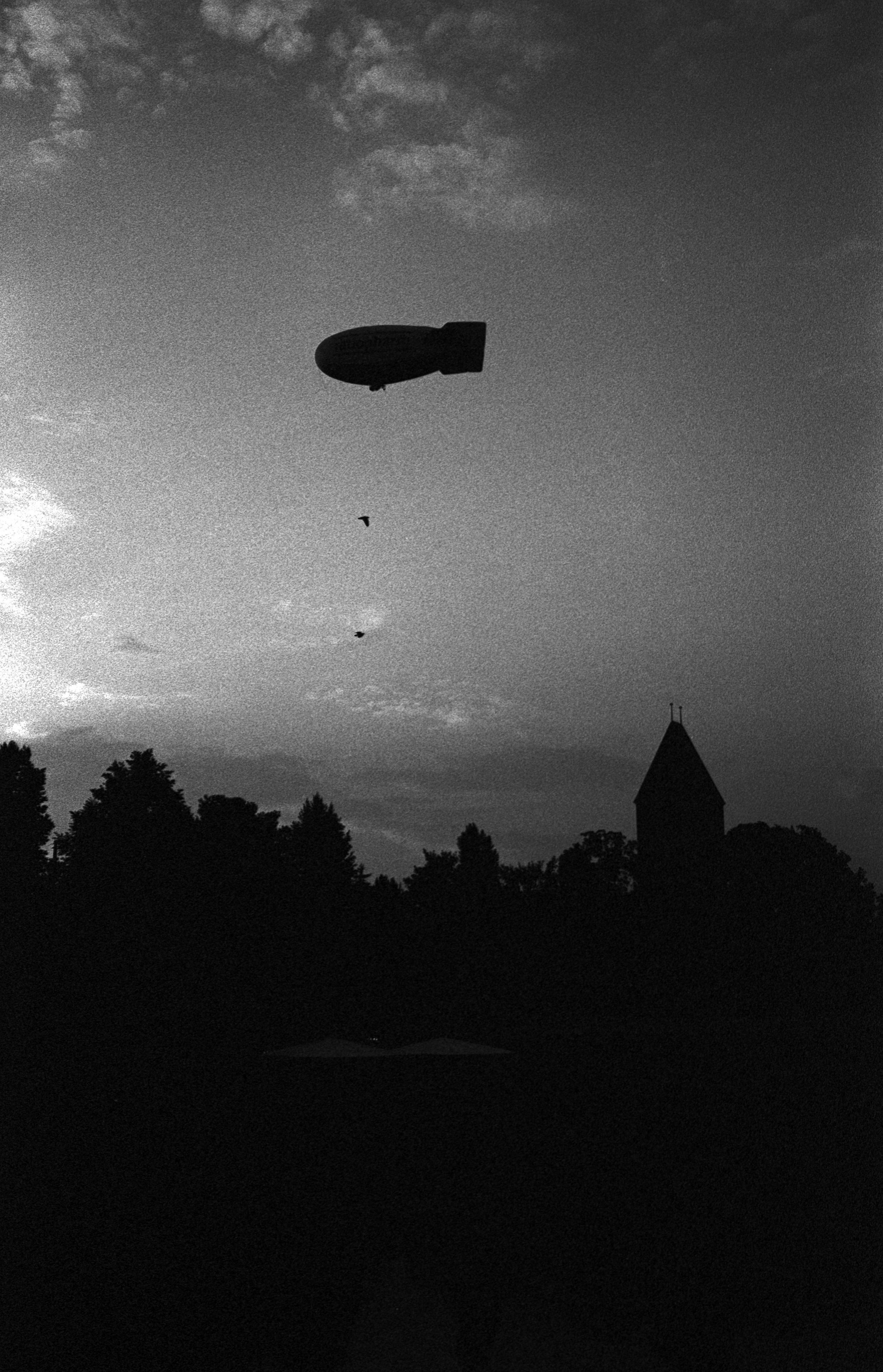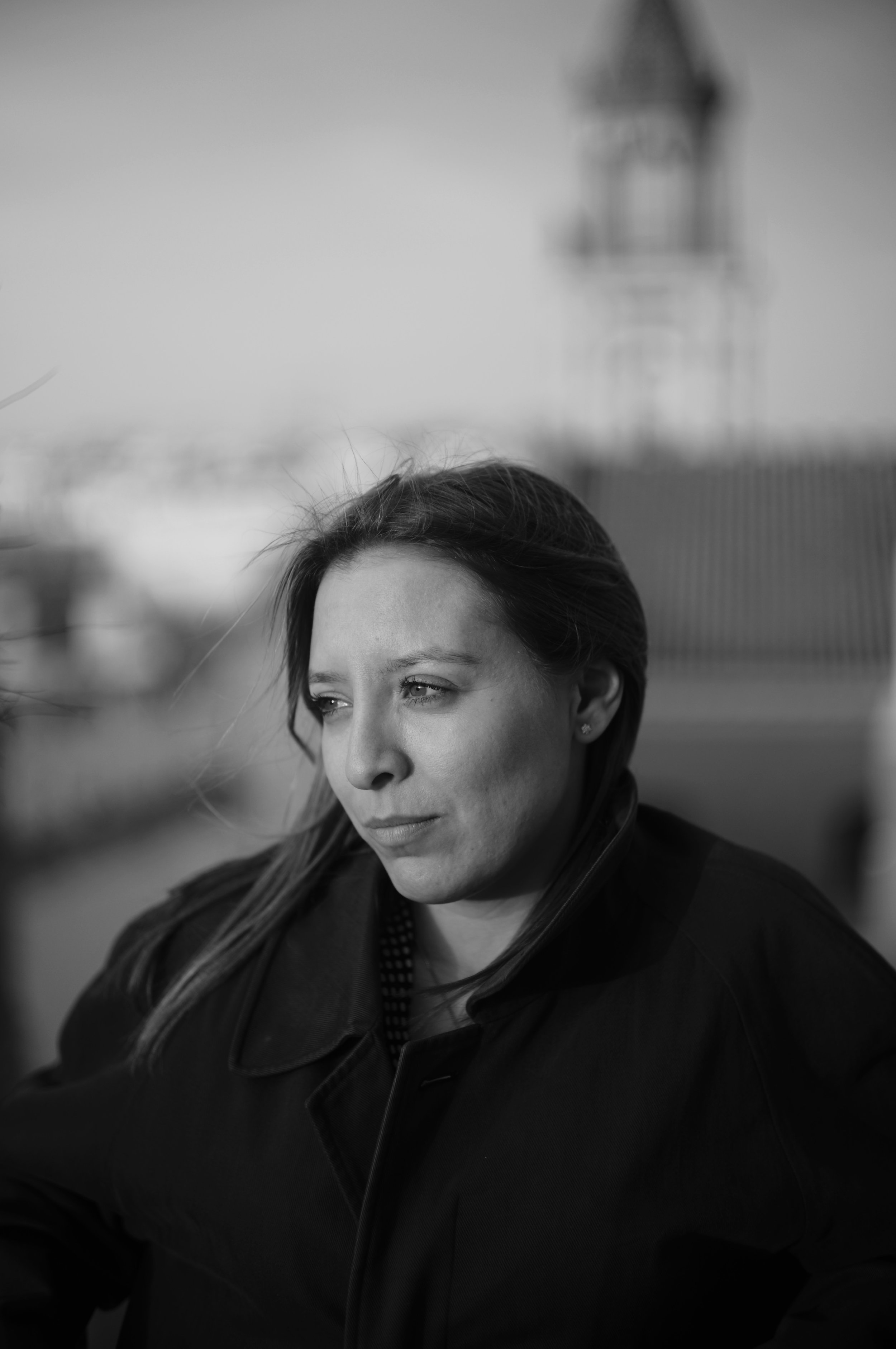Mañana de invierno
La luz amarilla de la cocina ofrece calidez en un día lluvioso y frío. La cafetera descansa caliente, ofreciendo confort rápido y necesario.
Son las siete de la mañana.
Ligeramente desenfocada, tomada con un 40mm f2
La luz amarilla de la cocina ofrece calidez en un día lluvioso y frío. La cafetera descansa caliente, ofreciendo confort rápido y necesario.
Son las siete de la mañana.

Ligeramente desenfocada, tomada con un 40mm f2
Un dirigible acercándose al campanario de Ulm, tan reminiscente de esa foto del Graf Zeppelin LZ 127 sobre el "Ulm Muenster", la torre de iglesia más alta del mundo:

Fujifilm Tiara II con Fomapan 400, reveladas todas en Yetilab.



Qué pena no haber tenido una focal larga y un trípode para emular la original, que pego aquí, de alrededor de 1930. Impresiona ver cómo algo tan frágil compitió contra algo tan perenne en llegar a los cielos (y perdió):

I like the reflection 35hunter makes on selfportraits. I like the idea of consciously shooting oneself with a specific purpose, rather than just looking attractive to social networks. And I also think it’s valuable to think about it in retrospective, to review past selfportraits understanding how we’ve changed the percepction of our own and how that is reflected in the way we’re depicted in our own photos.
From time to time I like to take a real close-up portrait where I can see all the detail in my face, the wrinkles, the stains, the expression derived from the shape of the eyes and the mouth. I like to look at them trying to locate which of my experiences caused them, as if there was a correlation between event and skin mark.
It’s about time I take another one of those.
I have the biggest dilemma. I’m torn between subject and context, between one message and a full asemblage, detail and atmosphere. 50mm or 35mm focal lenght?
Here are two very recent examples:

Javier, shot from aproximately 1 meter distance with a 50mm f1.4 wide open.

And Rocío, shot from aproximately 2m away, with a 35mm f1.4 also wide open.
See what I mean? Please, ignore the difference in light –which obviously favors the second photo– and focus on two things: how there is much more context on the second image and also how the background is less blurred, since the longer the focal lenght the easier it isolates the subject.
I know purists will say that context, background and surroundings are part of the message and that an experience photographer sould be able to integrate them in the visual narrative but… Sometimes I find detail to be richer, to provide more info than background.
See? I’m drowning in this dilemma. What do you think? Do you have a preference yourself?

FujiFilm Tiara II con Fomapan 400, revelada por Yetilab.
No sé si amar u odiar el grano del Fomapan. Lo amo por la textura que logra dar a veces. Lo odio porque es imprevisible.
Me gustó el efecto metálico que adquiría ese edificio al final del Danubio, desafiando a la vista opuesta, la del Ulm medieval, como una especie de nave alienígena recién aterrizada.

FujiFilm Tiara II con Fomapan 400, revelada en Yetilab.
Dos observadores inesperados en un paseo por la parte antigua de Ulm, se recrean viendo pasar a la poca gente que desafía a la lluvia.

Este es el motivo para volver a hacer fotos con cámara digital: la fotografía nocturna y de poca luz sin tener que usar trípode.
One of the reasons why I’m angry at instagram (as a community) is the fact that black and white photos tend to get way less likes than the color ones. I have not checked that empirically but it is something I see in my own uploads. No matter the subject or the message the photo conveys, color always gets more love. That makes absolutely no sense in terms of visual narrative, which leads me to believe that most people express appreciation based on a primal infantile instincs.
Rant aside, I’m trying to practice a bit of portraiture in black and white, experiencing with different lenses. One of my favorites is the Canon 50mm f1.4 LTM, also known as the “Japanese Summilux”. I like how in BW photos are better when there is more expression. It’s more difficult to cheat pleasing with the usual tricks (macros, textures, bokeh, color gradients, you name it). I like the softness in the rendering as well as the pleasing bokeh. I have to say I had to push the contrast a little bit in post, since this lens flattens the images a little bit too much for my taste.
Here are some photos of Jara and her friend Alba from our last trip to Sevilla. All of them were taken with the Canon 50mm f1.4 LTM





I wanted to do justice –a beautiful justice, I believe– to those old places taking photos of them with a camera as old; and those aged roads with equally aged film rolls. I wanted that ruggedness of the cracked asphalt to naturally be in the grain of the film images, those bumps reflected in the light leaks of the camera and in the stains that time creates in the expired 35mm emulsion.
Photos were taken with a Contax Quartz 139 and diverse lenses with Afga Agfapan APX 125, expired in 1982. The music used in the videosequence is the startling "Descansa" by David Cordero y el Niño de Elche.
My girlfriend Jara is an architect. She is currently working on the restoration and reconstruction of a hotel in Madrid. Part of her job is to go around the construction site checking that all the works are being done according to procedures. When doing so, she brings her tiny Fujifilm Tiara and documents the atmosphere, the work in progress.

Fujifilm Tiara, Kodak Color, developed at La Peliculera.
I very much enjoy these photos. They bring me her sight, the way she sees beauty in something I would have never put muy eyes on. She sometimes refers to the construction site as “my office. It couldn’t be farther from the type of workspace most of us have. So open, rough, analog, dusty and grainy, as film is most times.

Fujifilm Tiara, Kodak Color, developed at La Peliculera.
This little (big, beautiful) project of hers is still under construction (pun absolutely intended here) and most photos are not yet published or even developed. I am always excited when I see new ones coming, convinced that they will make a delightful exhibit somewhere in the renewed hotel when they reopen it.

This is Jara, in her working attire. Fujifilm Tiara, Kodak Color, developed at La Peliculera.
You can follow some of Jara’s photos at her instagram.